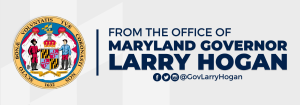
Editorial Board Washington Post – Many states continue to enjoy enormous budget surpluses, thanks to the open spigot of federal assistance during the pandemic, rising incomes and, in energy-rich states, high oil prices. It’s tempting to keep slashing taxes and jack up spending. But heading into a potential economic downturn, with tighter monetary policy to counter persistently high inflation, the prudent course for state legislatures convening in the coming weeks is to batten down the hatches for storms ahead. Rainy-day funds, also referred to as stabilization accounts, are essential to weather everything from the vagaries of the business cycle to natural disasters and flawed budget forecasting.
Maryland has a $2.5 billion surplus, plus another $3 billion in its rainy-day account. As Democrats prepare to reclaim full control of state government for the first time in eight years, outgoing Gov. Larry Hogan (R) is calling on them to maintain a rainy-day fund equivalent to 12 percent of general fund revenue. “It would be a mistake for the legislature to use its newly expanded budgetary power to return to its old habits of raiding the rainy-day fund or recklessly spending down the surplus,” says Mr. Hogan.
Gov.-elect Wes Moore (D), who will release his first budget proposal in the coming weeks, campaigned on investing the state’s surpluses in programs aimed at tackling systemic problems such as child poverty and making Maryland more competitive. But his spokesman Brian Adam Jones also nods to the importance of preparing for a downturn. “Our current fiscal position demands that we are strategic, intentional, and responsible,” he said in a statement responding to Mr. Hogan.
Virginia has a $3.6 billion surplus. Gov. Glenn Youngkin (R) proposes another $1 billion in tax cuts on top of the $4 billion worth he signed into law in 2022. He would decrease the top marginal tax rate to 5.5 percent from 5.75 percent, which would cost an estimated $700 million annually in future years. To his credit, Mr. Youngkin introduced an “accordion” budget that can contract up to $1 billion if revenue fails to hit targets because of a downturn. Unlike Mr. Moore, Mr. Youngkin will need to secure some votes from the opposing party, because the Democrats control the state Senate.
The good news is that state governments across the United States are in a much healthier position than they were going into the Great Recession. In fiscal year 2008, the median rainy-day balance was 4.8 percent as a share of spending from the general fund. Now, it’s 11.6 percent, according to a new report from the National Association of State Budget Officers. Maryland’s rainy-day fund is 8.4 percent of fiscal 2023 spending and Virginia’s is 12.2 percent. Mr. Hogan’s suggestion that Maryland keep a rainy-day fund at 12 percent of general fund spending would — sensibly — put the state in line with neighboring Virginia.
The NASBO report also shows state government spending has surged since the start of the pandemic: Budgets enacted for the 2023 fiscal year, which began last summer in most states, provide for a 6.7 percent average increase. That’s on top of 18.3 percent spending growth the year before. Smart states have been using these unexpected boom years to pay off debt, shore up pension liabilities, invest in capital construction and otherwise make their balance sheets more resilient. Fortunately, total reserve balances across all 50 states have tripled from fiscal 2020 to fiscal 2022. Thirty states now have rainy-day funds exceeding 10 percent of their budgets.
The best way to compare states is to look at how many days of spending their current savings would cover. Wyoming was best, at 350 days, when Pew Charitable Trusts crunched the numbers in October. The worst were Washington State and Illinois, whose reserves couldn’t even cover five days of operating costs.
In 32 states, caps exist to limit how large rainy-day funds can grow before money gets redirected elsewhere. Most typical is a limit of 10 percent of annual general fund spending, though Virginia raised its to 15 percent after the Great Recession. Pew projects 11 of the 32 are at or near their caps.
Some states, including Minnesota and Utah, conduct annual stress tests to simulate various scenarios of revenue shortfalls and surging demand for services. When Moody’s Analytics ran its own stress tests on state budgets this fall, 39 states, including Maryland and Virginia, had sufficient cash balances to weather a moderate recession, while seven had significantly smaller balances than necessary.
States cannot count on bailouts or stimulus checks from the federal government in the event of a recession. That spigot is closing with the Republican takeover of the House. Governors don’t want to squirrel away so much that they’re not investing as much as they could in schools and safety. But neither should they refuse to face the reality that extravagance now — whether through spending or tax cuts — would worsen and prolong the suffering of their citizens when times turn tougher.





